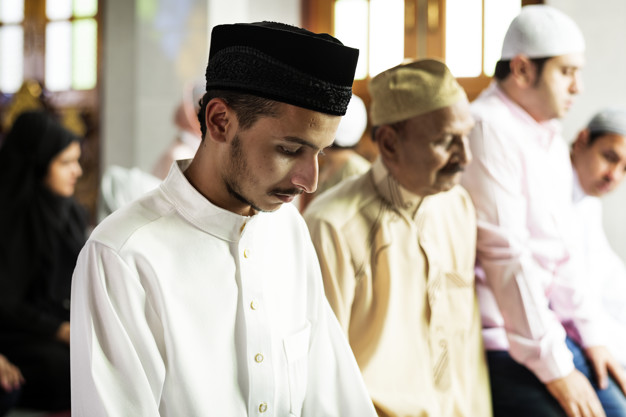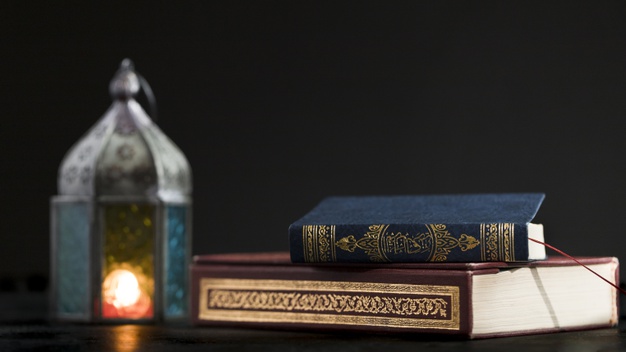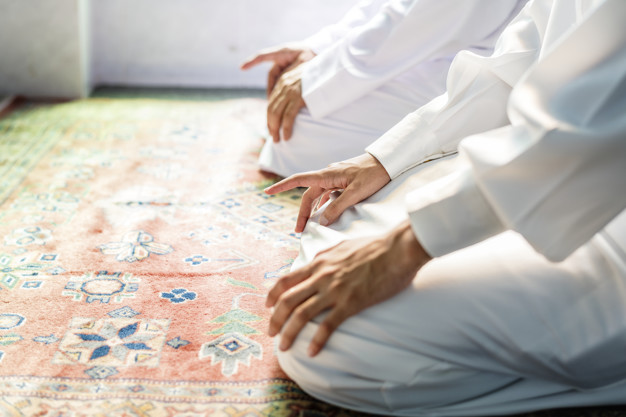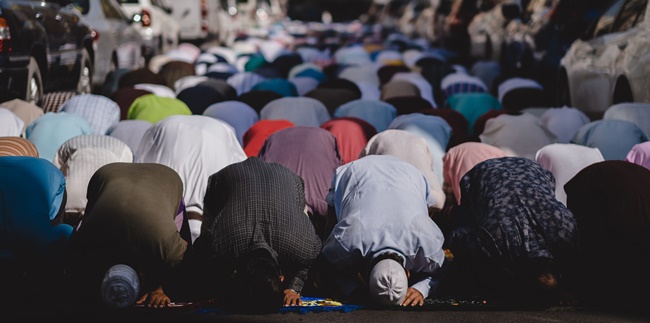Kapanlagi.com - The guide for Idul Adha prayer at home is very easy to practice and important to understand according to the sequence. Because the implementation of Idul Adha 10 Dzulhijjah 1442 H, the government through the Ministry of Religious Affairs of the Republic of Indonesia recommends that people perform Idul Adha prayer at home.
Based on the decision of the isbat session held some time ago, the government through the Ministry of Religious Affairs of the Republic of Indonesia has decided that the implementation of Idul Adha 10 Dzulhijjah 1442 H will fall on July 20, 2021.
The implementation of Idul Adha 10 Dzulhijjah 1442 H also coincides with the Enforcement of Restrictions on Community Activities (PPKM) in several regions, which is planned to be extended for 6 weeks. Therefore, people are advised to perform Idul Adha prayer at home in order to avoid the risk of an increase in COVID-19 cases.
Therefore, the procedure for Idul Adha prayer at home along with the intention readings can be used as a reference to continue performing Idul Adha prayer at home. By knowing the procedure for Idul Adha prayer, it can facilitate you in performing the series of Idul Adha prayer. Here is the complete procedure for Idul Adha prayer at home, including the intention readings and the sequence, which is summarized by kapanlagi.com from various sources.
1. Reading the Prayer Intention for Eid al-Adha

(credit: freepik.com)
Reading the prayer intention for Eid al-Adha is the first series of actions that need to be done before performing the Eid al-Adha prayer. That is why below there is a reading of the prayer intention for Eid al-Adha. Just take a look at the explanation of the reading of the prayer intention for Eid al-Adha in congregation and individually at home.
1) Reading the Prayer Intention for Eid al-Adha Individually at Home
"Usholli sunnatan 'iidil adhaa rok'ataini mustaqbilal qiblati lillaahi ta'aalaa."
Meaning: "I intend to perform the sunnah prayer of Eid al-Adha, two units, facing the qibla, for the sake of Allah ta'ala."
2) Reading the Prayer Intention for Eid al-Adha in Congregation (Follower/Imam)
"Ushalli sunnata li 'idil adha rak'ataini mustaqbilal qiblati imaaman/makmuuman lillaahi ta'ala."
Meaning: "I intend to perform the sunnah prayer of Eid al-Adha, two units, facing the qibla, as a follower/imam, for the sake of Allah ta'ala."
2. Procedures for Eid al-Adha Prayer

(credit: freepik.com)
Idul Adha prayer consists of two rak'ahs with one salam. The guide for the procedure of Idul Adha prayer can be carried out according to its sequence, starting from intention to salam. After previously knowing how to recite the intention for Idul Adha prayer, you can perform the series of procedures for Idul Adha prayer as described below. Here is the procedure for Idul Adha prayer that needs to be understood according to its sequence.
- Recite the intention for Idul Adha prayer.
- Takbiratul Ikhram.
- Recite the opening prayer.
- Recite the takbir seven times, then recite the tasbih sentence in the first rak'ah.
"Subhanalloh wal hamdulillah wa laa ilaha illalloh wallohu akbar."
Meaning: "Glory be to Allah, all praise is for Him, there is no god but Allah, Allah is the Greatest."
- Recite Surah Al-Fatihah.
- Recite a short surah from the Quran.
- Bow down with tranquility.
- Stand upright with tranquility.
- Prostrate with tranquility.
- Sit between the two prostrations with tranquility.
- Prostrate for the second time with tranquility.
- Rise from prostration and recite the takbir in the second rak'ah.
- Recite the takbir five more times, then recite the tasbih sentence between the takbir.
"Subhanalloh wal hamdulillah wa laa ilaha illalloh wallohu akbar."
Meaning: "Glory be to Allah, all praise is for Him, there is no god but Allah, Allah is the Greatest."
- Recite Surah Al-Fatihah.
- Recite a short surah from the Quran.
- Bow down with tranquility.
- Stand upright with tranquility.
- Prostrate with tranquility.
- Sit between the two prostrations with tranquility.
- Prostrate for the second time with tranquility.
- Sit for the tashahhud with tranquility.
- Salam.
3. Procedures for Eid al-Adha Sermon

(credit: freepik.com)
After performing the procedures for Eid al-Adha prayer as mentioned above in order, it is recommended for the congregation to listen to the sermon. Usually, there are two sermons for Eid al-Adha.
During the implementation of Eid al-Adha prayer at home when performed collectively with the immediate family, it can be accompanied by a sermon by the imam. However, even without a sermon after performing the congregational Eid al-Adha prayer, it is also allowed.
As for the procedures for the Eid al-Adha sermon, you can refer to the following description as quoted from merdeka.com.
Procedures for the first Eid al-Adha sermon:
- Recite the takbir 9 times.
- Recite the praise to Allah SWT, "Alhamdulillah."
- Recite the salawat upon the Prophet Muhammad, "Allahumma shalli ala sayyidina Muhammad."
- Exhort about piety.
- Recite a verse from the Quran.
Procedures for the second Eid al-Adha sermon:
- Recite the takbir 7 times.
- Recite the praise to Allah SWT, "Alhamdulillah."
- Recite the salawat upon the Prophet Muhammad, "Allahumma shalli ala sayyidina Muhammad."
- Exhort about piety.
- Pray for the Muslim men and women.
4. The Virtues of Eid al-Adha Prayer

(credit: freepik.com)
After knowing the procedure for performing Eid al-Adha prayer at home along with its intention, below is a review of the virtues of Eid al-Adha prayer. Because performing Eid al-Adha prayer apparently has extraordinary virtues for the performer. What are the virtues of Eid al-Adha prayer?
One of the virtues of Eid al-Adha prayer that a Muslim can obtain is the forgiveness of sins for one year before and after. This virtue can be obtained by performing Arafah fasting on the 9th of Dhu al-Hijjah.
In addition, another virtue is to receive multiplied rewards. Because the 10th of Dhu al-Hijjah is mentioned as a special day and most beloved by Allah SWT. Therefore, we are encouraged to increase good deeds, including performing Eid al-Adha prayer. This is in accordance with the hadith of the Prophet Muhammad, narrated by Ibn Abbas RA, that the Prophet Muhammad said:
"There are no days in which righteous deeds are more beloved to Allah than these days."
So, that is the complete procedure for performing Eid al-Adha prayer at home along with its intention, understand it in order. Although Eid al-Adha prayer on the 10th of Dhu al-Hijjah 1442 H this year must be performed, may it not diminish sincerity in worship.
Source: merdeka.com, Nu Online, Islampos.com
(kpl/nlw)
Disclaimer: This translation from Bahasa Indonesia to English has been generated by Artificial Intelligence.
















